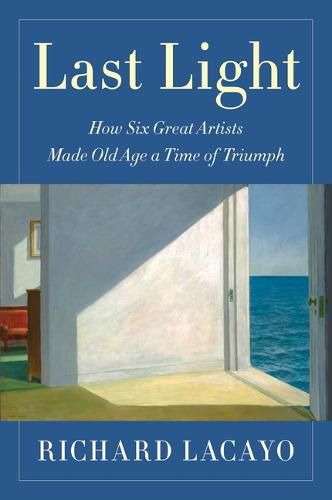Readings Newsletter
Become a Readings Member to make your shopping experience even easier.
Sign in or sign up for free!
You’re not far away from qualifying for FREE standard shipping within Australia
You’ve qualified for FREE standard shipping within Australia
The cart is loading…






One of the nation’s top art critics shows how six great artists made old age a time of triumph by producing the greatest work of their long careers–and, in some cases, changing the course of art history. Ordinarily, we think of young artists as the bomb throwers. Monet and Renoir were still in their twenties when they embarked on what would soon be called Impressionism, as were Picasso and Braque when they ventured into Cubism. But your sixties and the decades that follow can be no less liberating if they too bring the confidence to attempt new things. Young artists may experiment because they have nothing to lose; older ones because they have nothing to fear. With their legacies secure, they’re free to reinvent themselves…sometimes with revolutionary results.
Titian’s late style offered a way for pigment itself–not just the things it depicted–to express feelings on the canvas, foreshadowing Rubens, Frans Hals, 19th-century Impressionists, and 20th-century Expressionists. Goya’s late work enlarged the psychological territory that artists could enter. Monet’s late waterlily paintings were eventually recognized as prophetic for the centerless, diaphanous space developed after World War II by abstract expressionists like Jackson Pollock and Phillip Guston. In his seventies, Matisse began to produce some of the most joyful art of the 20th century, especially his famous cutouts that brought an ancient craft into the realm of High Modernism. Hopper, the ultimate realist, used old age on occasion to depart into the surreal. And Nevelson, the patron saint of late bloomers, pioneered a new kind of sculpture: wall-sized wooden assemblages made from odds and ends she scavenged from the streets of Manhattan.
Though these six artists differed in many respects, they shared one thing: a determination to go on creating, driven not by the bounding energies of youth but by the ticking clock that would inspire them to produce some of their greatest masterpieces.
$9.00 standard shipping within Australia
FREE standard shipping within Australia for orders over $100.00
Express & International shipping calculated at checkout
One of the nation’s top art critics shows how six great artists made old age a time of triumph by producing the greatest work of their long careers–and, in some cases, changing the course of art history. Ordinarily, we think of young artists as the bomb throwers. Monet and Renoir were still in their twenties when they embarked on what would soon be called Impressionism, as were Picasso and Braque when they ventured into Cubism. But your sixties and the decades that follow can be no less liberating if they too bring the confidence to attempt new things. Young artists may experiment because they have nothing to lose; older ones because they have nothing to fear. With their legacies secure, they’re free to reinvent themselves…sometimes with revolutionary results.
Titian’s late style offered a way for pigment itself–not just the things it depicted–to express feelings on the canvas, foreshadowing Rubens, Frans Hals, 19th-century Impressionists, and 20th-century Expressionists. Goya’s late work enlarged the psychological territory that artists could enter. Monet’s late waterlily paintings were eventually recognized as prophetic for the centerless, diaphanous space developed after World War II by abstract expressionists like Jackson Pollock and Phillip Guston. In his seventies, Matisse began to produce some of the most joyful art of the 20th century, especially his famous cutouts that brought an ancient craft into the realm of High Modernism. Hopper, the ultimate realist, used old age on occasion to depart into the surreal. And Nevelson, the patron saint of late bloomers, pioneered a new kind of sculpture: wall-sized wooden assemblages made from odds and ends she scavenged from the streets of Manhattan.
Though these six artists differed in many respects, they shared one thing: a determination to go on creating, driven not by the bounding energies of youth but by the ticking clock that would inspire them to produce some of their greatest masterpieces.